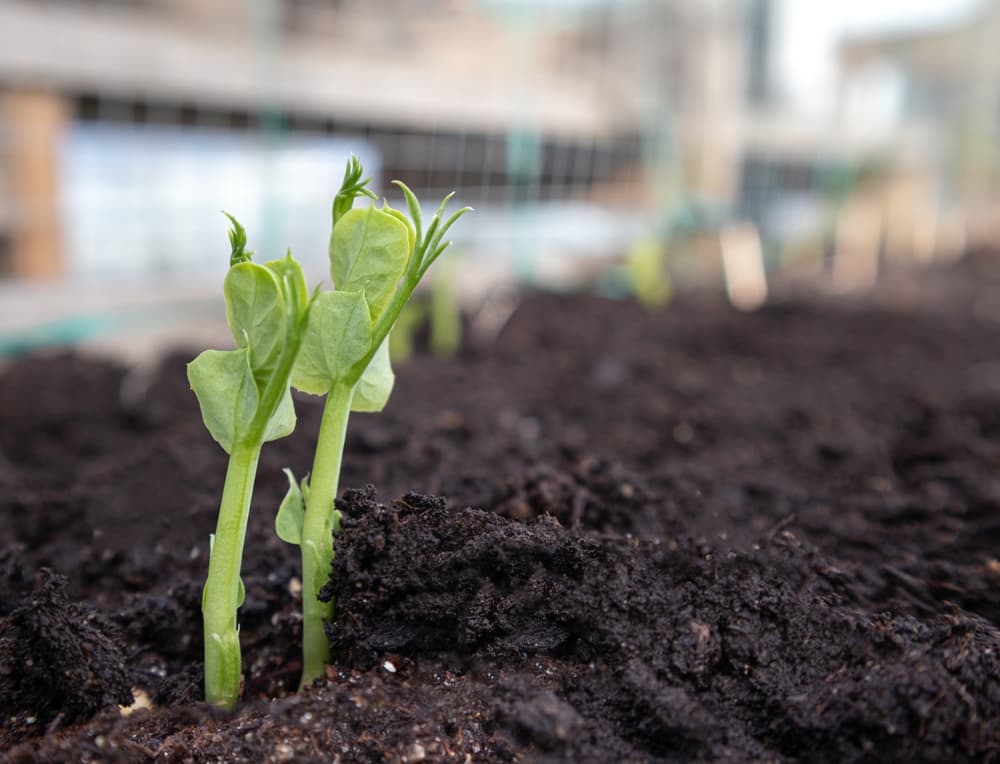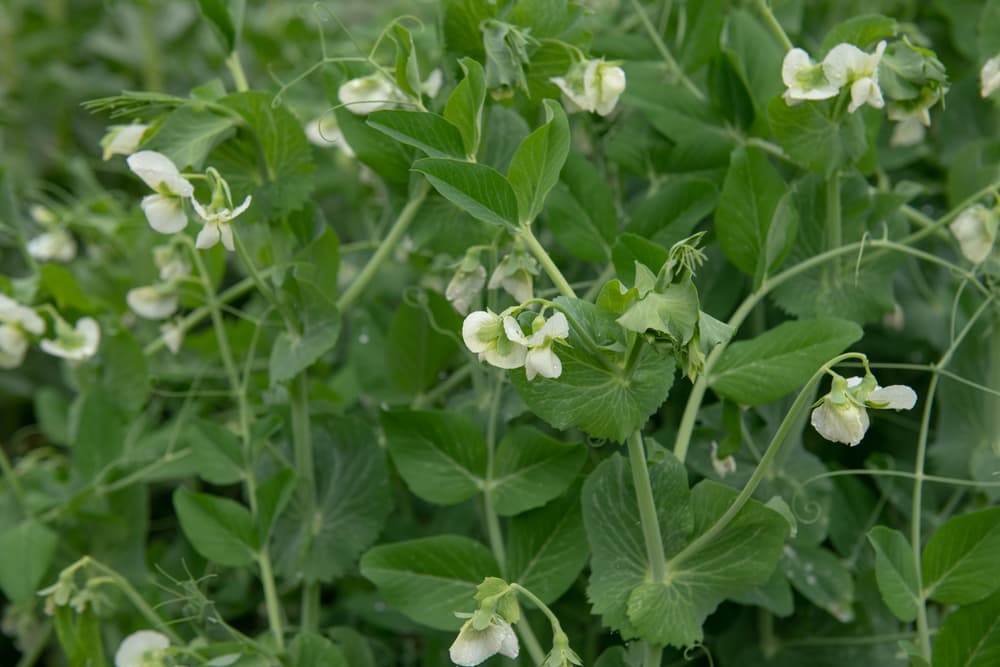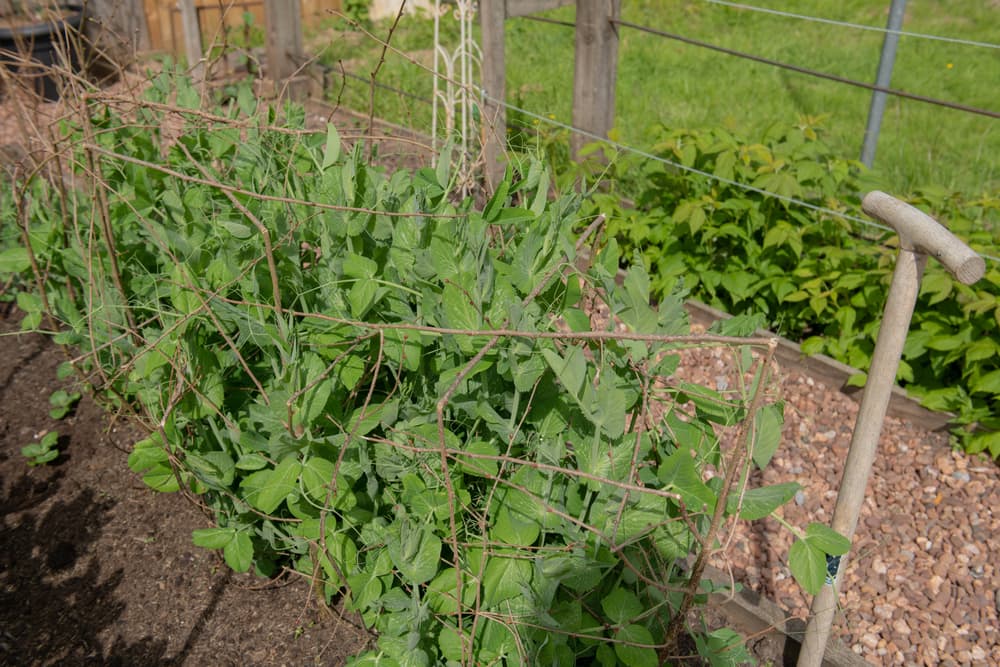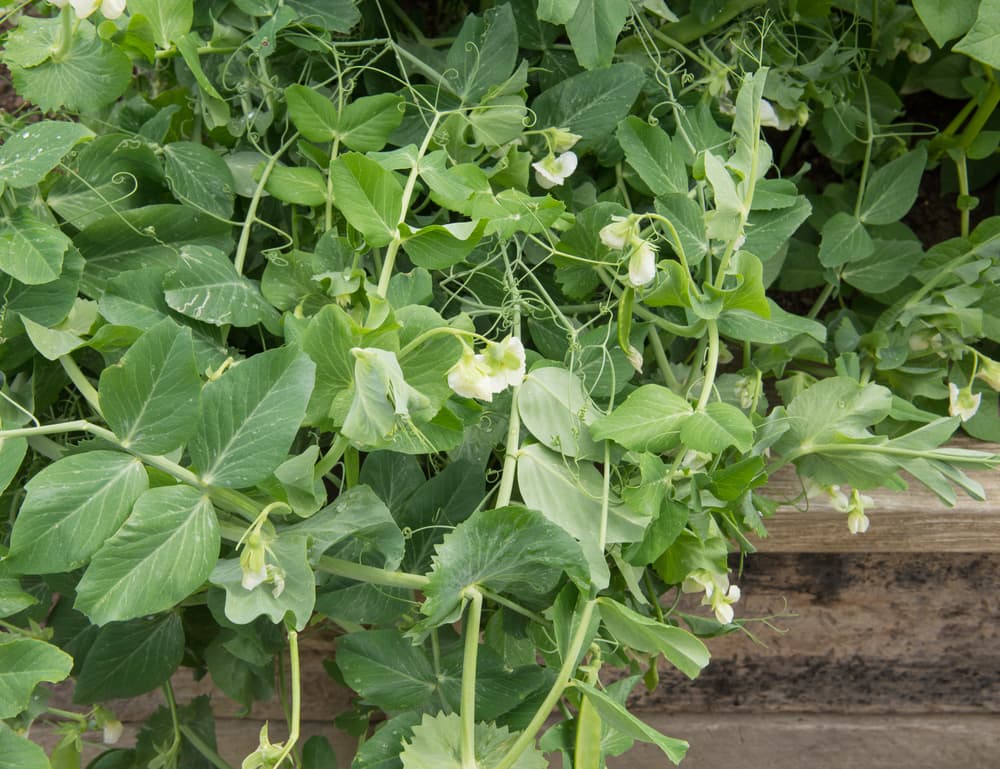VEGETABLES > PEAS
Chris is a gardening writer and nature enthusiast. He graduated from Oxford Brookes University in 2022 with an MA in Psychology. Chris works with the Leeds Green Action Society, helping their food cooperative by growing various fruit and vegetables on their two allotments in Hyde Park, Leeds.
Reviewed By PETER LICKORISH

Peter is a Horticulture Lecturer and self-employed Horticulturist, with a passion for diverse areas of the industry - from garden design to the science behind plant growth and propagation. He has completed the Royal Horticultural Society’s Master of Horticulture (MHort) Award and lectures on RHS courses at Bedford College.
Contributions From KATHY SLACK

The author of ‘From The Veg Patch’, Kathy Slack is a chef with a particular fondness for growing her own vegetables. She has won various awards including the Soil Association Best Organic Blogger Award and has a large following online, where she shares many growing tips and recipes with her followers.
IN THIS GUIDE
PEAS GUIDES
There are few things more satisfying than picking your own homegrown garden peas.
Deliciously sweet and super tasty – once you’ve tasted peas you’ve handpicked that very day, you will never go back to frozen.
Garden peas are an easy and extremely attractive crop to grow, adding texture, structure and colour to your garden.
They also don’t take up too much space, and you can even grow them in containers meaning they are a perfect addition to any garden, no matter its size.
Overview
| Botanical Name | Pisum sativum |
| Common Name(s) | Garden peas |
| Plant Type | Vegetable |
| Native Area | Cultivated |
| Hardiness Rating | H2 and H3 (Some H4) |
| Foliage | Edible shoots |
| Flowers | White |
Sunlight
Preferred Sunlight
Full Sun / Partial Shade
Exposure
Sheltered
Size
Height
1 – 1.5M
Spread
0.1 – 0.5M
Bloom Time
June – September
Soil
Preferred Soil Type
Most Soil Types
Moisture
Moist but well drained
pH
Neutral / Alkaline
Botanically, peas are actually classed as fruit as they contain seeds and develop from the ovary of a flower.
Peas, or Pisum sativum, are annual plants meaning they have a one-year life cycle.

Immature peas are used as a vegetable and can be consumed fresh, or are preserved frozen or in cans.
Mature peas – typically called field peas – produce dry peas and are the basis for pease porridge and pea soup, both medieval dietary staples.
These days, peas are one of the most popular crops and are used in cooking worldwide.
Common Varieties

There are many, many types of peas, and they all vary in size, shape, colour and taste.
Some peas mature early so can be sown in autumn and harvested in June, whilst others won’t mature until October.
“Pea varieties can broadly be classified by how soon they can be harvested after sowing,” shares Master Horticulturist Peter Lickorish.
“First early peas produce crops within just a little over 2 months, second early peas take around 3 months to crop and the maincrop varieties will take 4 months or more.
“First early peas tend to be the smaller plants anyway, but the more dwarf first early peas, which produce smooth peas, are usually the safer option for autumn sowing.
“Remember to look for the hardier cultivars too, for early sowings, such as ‘Meteor’.”
With so many types of peas to choose from, it can be hard to know where to start.
We’ve put together a list of some of our favourite peas to help you get started.
‘Capucijner’

This highly ornamental, heirloom species of pea plant is said to have been bred in Holland during the 1500s by Capuchin monks.1Pea – ‘Blue Pod Capucijners.’ (2021, December 22). Seeds of Imbolc. Retrieved March 16, 2023, from https://seedsofimbolc.ca/index.php/product/blue-pod-capucijners-pea-pre-1800pisum-sativum-cv/
This variety bears pretty, deep purple bods which contain olive-green peas that can be harvested in July and August.
Growing to a height of 1.8m and with a spread of 25cm, they also produce lovely pink-white flowers that bloom from June to August.
This makes them a great way to add interest to borders.
Capucijner peas are delicious in soups and stews, and the plants thrive best in well-drained soil and full sun or dappled shade.
This plant will do well in large pots and containers but will need regular watering.
‘Avola’

This hardy first early pea plant grows to a height of 60cm and 25cm in spread and has a compact growth habit making it ideal for growing in pots and containers and small gardens.
Avola pea plants yield an abundance of tender pods containing eight deliciously sweet peas.
If you find you have a surplus of peas after harvest, the peas can be frozen easily.
This variety also produces white flowers and can be harvested in July and August.
As with most pea plants, the Avola will do best in moist, well-drained soil and full sun or dappled shade.
‘Hurst Greenshaft’

This popular maincrop pea produces prolific crops of long pods, containing as many as ten wrinkly peas each which can be harvested from June all the way through to the end of September.
This variety is a firm favourite among gardeners and has even been awarded the Royal Horticulture Society’s prestigious Award of Garden Merit.2Pisum sativum “Hurst Green Shaft.” (n.d.). Royal Horticultural Society. Retrieved March 16, 2023, from https://www.rhs.org.uk/plants/346810/pisum-sativum-hurst-green-shaft/details
‘Hurst Greenshaft’ pea plants grow to a height of around 1.5m and spread to about 20cm in width and grow well in vegetable patches alongside carrots, beans and other yummy veggies.
This variety will thrive in a spot when it can enjoy full sun, in moist, well-drained soil.
‘Canoe’
The canoe pea plant bears long, slightly curved pods which resemble a canoe in shape and contain up to twelve peas.
The stems of this plant have very few leaves which makes it really easy to harvest the peas.
Canoe peas have a lovely sweet flavour and are an excellent option for freezing.
Growing to a height of 75cm and with a spread of 25cm, this variety can be sown in March and will be ready to harvest through July and August.
They also produce pretty white flowers which blossom from June to the end of August.
It sits within the maincrop category.
These flowers are rich in nectar and are loved by bees and other vital pollinators.
Canoe pea plants grow best in rich, moist, well-drained soil, in full sun or dappled shade.
Where To Grow Peas

Peas need a nice open, weed-free site and moist, fertile, well-drained soil.
Several weeks prior to planting, we recommend digging a fair amount of well-rotted compost into the soil to improve fertility and help it retain more moisture.
Peas can also make a great choice for container growing if you provide the right support, as Garden Blogger and Author Kathy Slack explains:
“You have to think about bang for buck in a pot, so choose crops that keep on giving, rather than one hit wonders like broccoli, cabbage, etc) and you’ll get more food for per pot.
“Peas and their varieties, such as ‘Alderman’ which drip-drip flowers so you don’t need to resow), are a great choice.”
Planting Out Peas
If you’ve sown peas indoors, before planting, allow the seedlings to harden off over a week.
You can then plant them out in their permanent positions.
Without support, pea plants have a tendency to flop over onto the ground.

To prevent this, you should make sure you put supports in place early long while the plants are still young.
Pea plants produce long shoots called tendrils which instinctually wrap themselves around anything in their path, so choose long thin supports to help guide and train them up in the right direction.
Prunings from a range of woody plants can be sunk securely in the ground and your peas’ tendrils will find them.
Peas Plant Care

Peas should be watered regularly.
Once the plants begin producing flowers, we recommend watering the plants thoroughly once a week to encourage good development and help the plants to establish themselves fully.
You can prevent the loss of moisture by applying a nice, thick mulch of well-rotted compost after watering; this will help lock in the moisture for longer.
Make Peas, Not War

As you can see, peas are not only easy to grow but incredibly rewarding, both with their beautiful blossoms as well as the delicious crops they produce.
Peas are a great plant for novice gardeners and, because they grow so well in pots and containers, they can be grown even in the smallest of gardens.
Filled with a delightful, mouth-watering flavour, we are sure that growing these plants will bring peas to your home, not war!
References
- 1Pea – ‘Blue Pod Capucijners.’ (2021, December 22). Seeds of Imbolc. Retrieved March 16, 2023, from https://seedsofimbolc.ca/index.php/product/blue-pod-capucijners-pea-pre-1800pisum-sativum-cv/
- 2Pisum sativum “Hurst Green Shaft.” (n.d.). Royal Horticultural Society. Retrieved March 16, 2023, from https://www.rhs.org.uk/plants/346810/pisum-sativum-hurst-green-shaft/details

